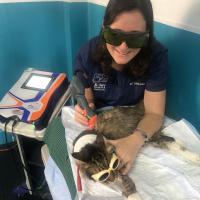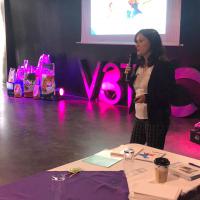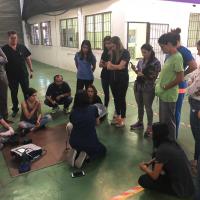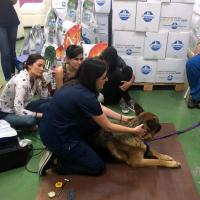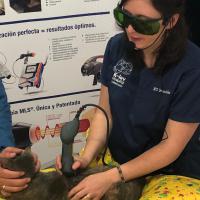Dr Sades, what do the people signing up for the MLS® training sessions look for?
We need to diversify according to the type of participants: the audience that participates in the courses is heterogeneous and consequently so are the demands and expectations. The needs of a general veterinarian or of one specializing in Physiotherapy, Dermatology, Orthopaedics, Neurology, and Surgery are not those, for example, of a student of veterinary medicine. Specifically, doctors who already use laser want to understand the qualities of MLS® compared to other therapies on the market, or, if they already have Laser Therapy, how to develop their skills and competences. University students, instead, are more often interested in acquiring introductory knowledge on the subject. The audience that attends the training sessions sometimes also includes distributors and sellers who look for useful details to make customers understand the clinical advantages of the therapy, also offering them additional information to make the most of it.
Workshops, seminars, and presentations are thus not only useful to understand how MLS® Laser Therapy works and when to use it...
Exactly. During the training you also learn how to choose the most suitable protocol to deal with specific pathologies, how to apply it in the most effective way so as to improve its prognosis, reduce recovery times, and therefore improve the patient’s quality of life. During the training sessions, those who already use MLS® in their daily practice, thanks also to the case histories that are presented and the direct exchange with the lecturer and the other participants, can have their questions answered about, for example, dosage, frequency of treatments, and advice for some specific problems. Finally, those who approach the therapy for the first time and have to decide whether to buy it, receive accurate information on the return on investment and the cost-benefit ratio.
Since the training is so comprehensive, the questions you receive are probably very diverse...
Diverse and often very specific! They range from wanting to know if the therapy has contraindications and how it is tolerated by the patient, to the possibility of applying it in orthopaedic patients with surgical implants, to treat an infected wound, otitis, or pododermatitis. The questions also concern other topics such as the frequency of application of the protocols for the various pathologies, the difference between continuous and pulsed laser, or how the emission is synchronized. Finally, there is no lack of questions related to the purchase and maintenance of the device or how much to charge for what.
From questions to doubts the leap is short. Which are the most common?
I would say they are of the technical-application type, to use MLS® in the most correct way, maximizing the results. To give some examples, they may concern the methods of application on infected and uninfected open wounds or on uneven surfaces, but also the use of different protocols on the same point, or in different regions, or the number of sessions necessary to have an effective response for a particular pathology.
Can the training, by providing clear and scientifically validated information, be considered a valid tool to make the veterinarians’ activity more effective and profitable?
According to my direct experience, I believe that the training contributes to improving the work activity of the participants, who, having studied a broad landscape of the cases in which MLS® can be used successfully, will be able to offer it to treat their patients. The tangible results that the owners will observe in their animals will trigger a word-of-mouth effect that will favour an increase in work for the professional. The training is also useful to those who are deciding whether to add laser therapy to their possible treatments: once the training is complete, any doubt will be dispelled and facing the investment with the confidence that it will be recovered quickly will be much easier.
But there is also another value added by the training: connecting the participants, allowing them to share experiences and clinical cases.
The sharing of one’s knowledge is always enriching because it can lead to the creation of a form of continuous support, invaluable for solving problems or for having a different point of view than your own. Training thus becomes not only an opportunity for professional growth, but also for a personal one.






